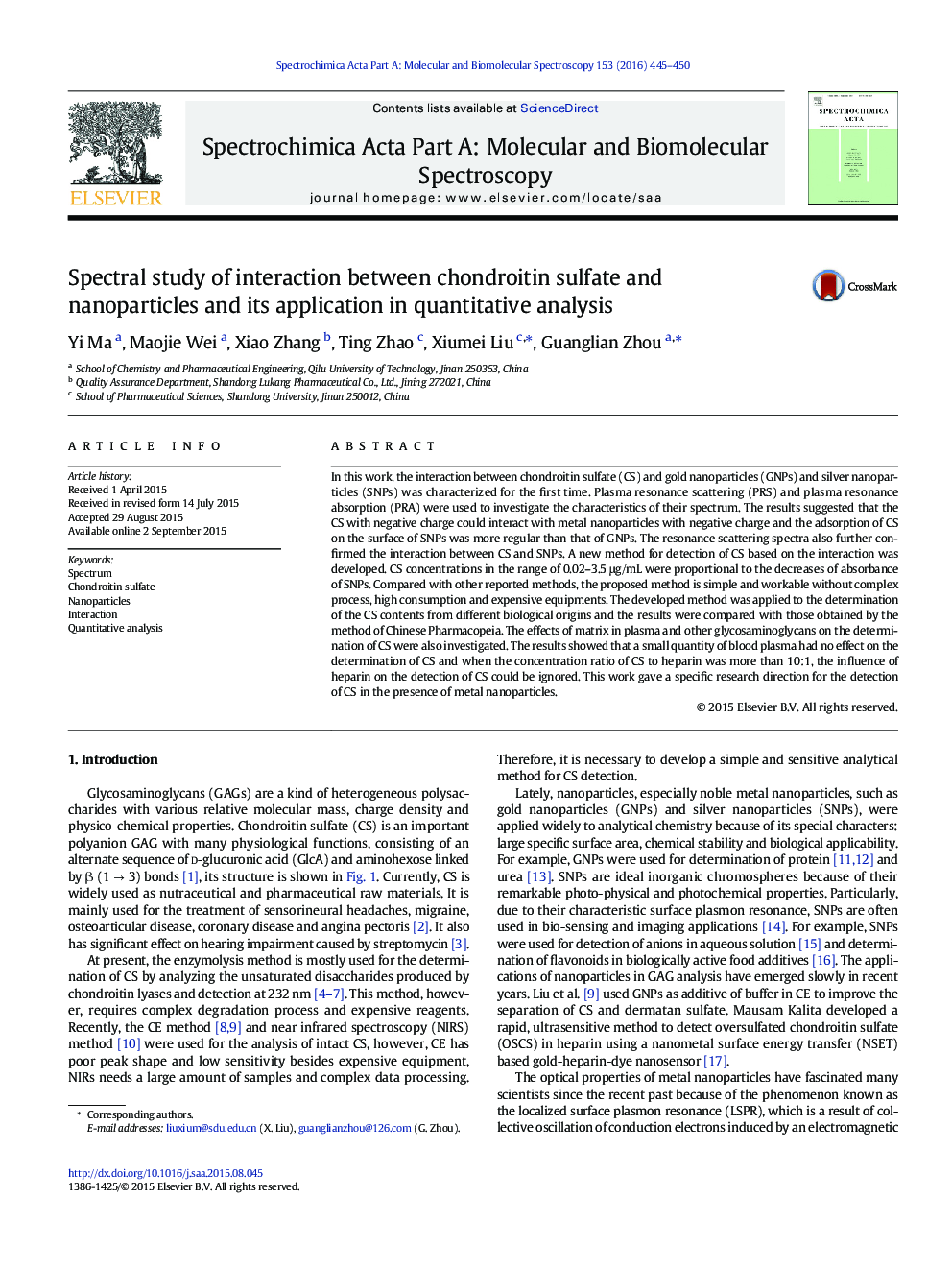| Article ID | Journal | Published Year | Pages | File Type |
|---|---|---|---|---|
| 1228747 | Spectrochimica Acta Part A: Molecular and Biomolecular Spectroscopy | 2016 | 6 Pages |
•The interaction between chondroitin sulfate (CS) and nanoparticles was characterized firstly.•The adsorption of CS on the surface of SNPs was more regular than that of GNPs.•The CS contents were determined using the developed method and standard method with good coherence.•The developed method achieved the determination of CS with blood plasma.
In this work, the interaction between chondroitin sulfate (CS) and gold nanoparticles (GNPs) and silver nanoparticles (SNPs) was characterized for the first time. Plasma resonance scattering (PRS) and plasma resonance absorption (PRA) were used to investigate the characteristics of their spectrum. The results suggested that the CS with negative charge could interact with metal nanoparticles with negative charge and the adsorption of CS on the surface of SNPs was more regular than that of GNPs. The resonance scattering spectra also further confirmed the interaction between CS and SNPs. A new method for detection of CS based on the interaction was developed. CS concentrations in the range of 0.02–3.5 μg/mL were proportional to the decreases of absorbance of SNPs. Compared with other reported methods, the proposed method is simple and workable without complex process, high consumption and expensive equipments. The developed method was applied to the determination of the CS contents from different biological origins and the results were compared with those obtained by the method of Chinese Pharmacopeia. The effects of matrix in plasma and other glycosaminoglycans on the determination of CS were also investigated. The results showed that a small quantity of blood plasma had no effect on the determination of CS and when the concentration ratio of CS to heparin was more than 10:1, the influence of heparin on the detection of CS could be ignored. This work gave a specific research direction for the detection of CS in the presence of metal nanoparticles.
Graphical abstractFigure optionsDownload full-size imageDownload as PowerPoint slide
